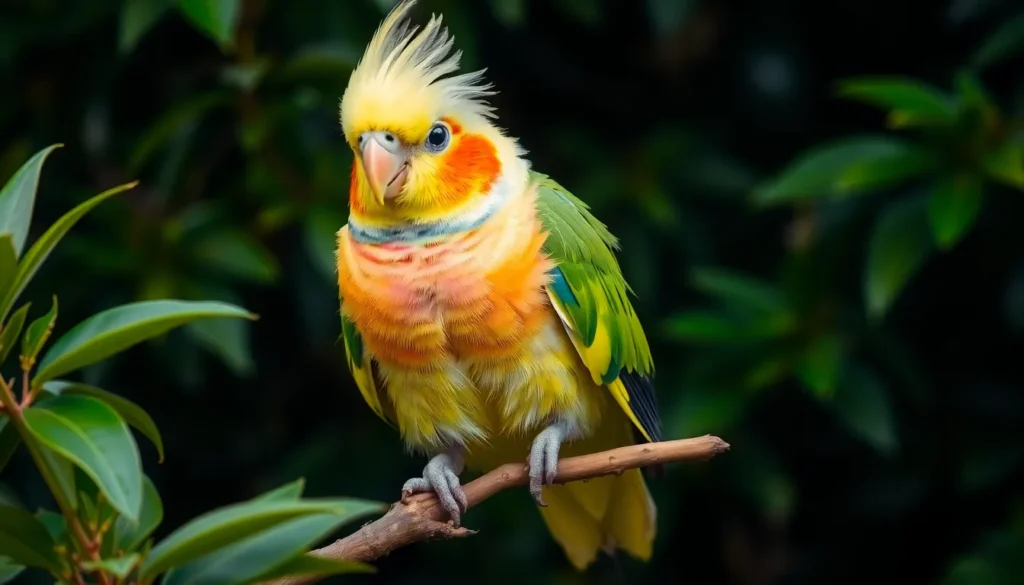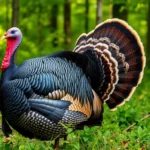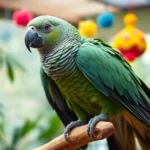Cockatiels have captured our hearts as one of the most beloved pet birds worldwide. With their distinctive crested heads and charming personalities these Australian natives bring joy and companionship to millions of homes across the globe.
We’ve discovered that cockatiels aren’t just beautiful birds – they’re intelligent social creatures that form deep bonds with their human families. Their playful nature and ability to mimic sounds make them fascinating companions for both experienced bird owners and first-time pet parents.
Whether you’re considering adding a cockatiel to your family or you’re already enchanted by these feathered friends we’ll explore everything you need to know about these remarkable birds. From their unique behaviors to proper care requirements cockatiels offer a rewarding pet ownership experience that’s hard to match.
What Is a Cockatiel Bird?
A cockatiel is a small parrot species native to Australia that belongs to the cockatoo family. These distinctive birds measure approximately 12 to 13 inches in length and weigh between 2.5 to 3.5 ounces.
Physical Characteristics and Appearance
Cockatiels display remarkable visual features that make them instantly recognizable among pet birds. Their most prominent characteristic is the distinctive crest of feathers on top of their heads that raises and lowers based on their emotional state and alertness level.
The classic wild type cockatiel showcases a gray body with bright orange circular patches on their cheeks called ear coverts. Males typically exhibit more vibrant coloration with deeper orange cheek patches and a bright yellow head and crest. Females present more subdued colors with duller orange patches and retain gray barring on their tail feathers.
Color Variations:
| Mutation Type | Body Color | Crest Color | Cheek Patches |
|---|---|---|---|
| Normal Gray | Dark gray | Yellow | Bright orange |
| Lutino | White/cream | Yellow | Orange |
| Pied | Gray and white patches | Yellow | Orange |
| Pearl | Gray with white spotting | Yellow | Orange |
| Cinnamon | Brown-gray | Yellow | Orange |
Their wings span approximately 6 to 7 inches when fully extended and feature long flight feathers that enable agile movement. Cockatiels possess strong feet with four toes arranged in a zygodactyl pattern with two toes facing forward and two facing backward.
Natural Habitat and Origins
Cockatiels originate exclusively from Australia where they inhabit diverse environments across the continent. These birds thrive in open woodlands savannas scrublands and agricultural areas throughout mainland Australia excluding Tasmania.
Wild cockatiels form large flocks that can contain hundreds of individuals during non breeding seasons. They prefer areas near water sources such as rivers creeks and billabongs where they can access fresh water and abundant food supplies. These nomadic birds follow seasonal rainfall patterns and food availability which creates their migratory behavior across different regions.
Their natural diet consists primarily of grass seeds particularly from spinifex and other native Australian grasses. Cockatiels also consume seeds from eucalyptus trees acacias and various shrubs found in their native habitat. During breeding season they seek out tree hollows in eucalyptus trees river red gums and other large trees where they establish their nests.
The species was first discovered by European explorers in 1770 and later brought to Europe in the 1800s where they quickly gained popularity as companion birds due to their gentle nature and attractive appearance.
Cockatiel Bird Personality and Temperament
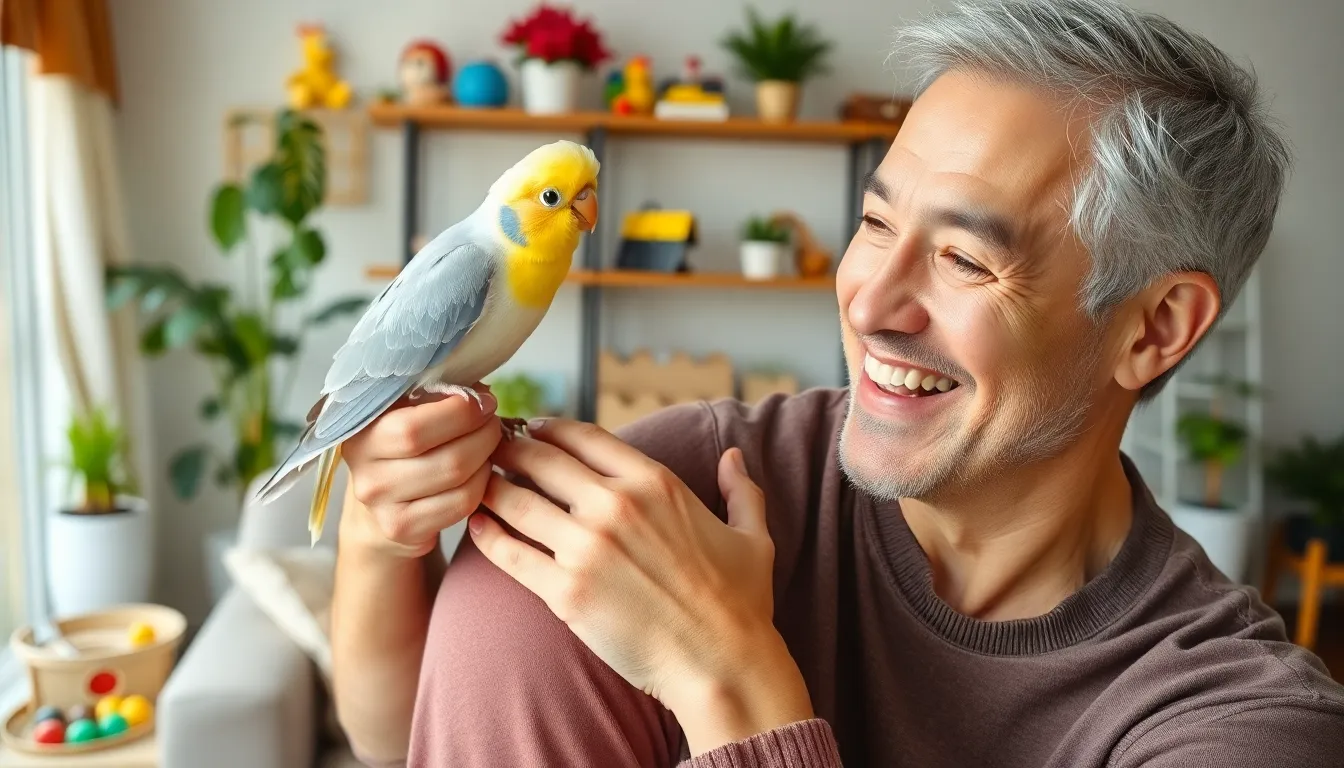
Cockatiel birds exhibit remarkable personalities that make them exceptional companions for bird enthusiasts. Their temperament combines intelligence with affectionate traits that create lasting bonds with their owners.
Social Behavior and Intelligence
Cockatiels demonstrate sophisticated social behaviors that reflect their high intelligence levels. These birds communicate through various vocalizations including whistles, chirps, and learned phrases that can exceed 20 distinct sounds. Flock mentality drives their social interactions, making them crave constant companionship from either other birds or their human families.
Problem-solving abilities emerge early in cockatiels, with young birds learning to navigate complex environments and manipulate objects by 8-12 weeks of age. Memory retention spans several months, allowing these birds to remember exact people, routines, and even musical melodies. Interactive play becomes essential for their mental stimulation, with cockatiels showing preference for puzzle toys and foraging activities.
Emotional intelligence appears through their ability to read human facial expressions and respond accordingly. Cockatiels often mirror their owner’s energy levels, becoming more active during engaged interactions and calmer during quiet moments. Social hierarchies develop when multiple birds share living spaces, with established pecking orders that maintain group harmony.
Bonding with Humans
Cockatiel birds form profound emotional connections with their human caregivers through consistent daily interactions. Trust building occurs gradually over 2-4 weeks, with hand-fed birds typically bonding faster than parent-raised specimens. Physical affection manifests through head scratches, shoulder perching, and gentle nibbling behaviors that indicate acceptance and comfort.
Vocalization patterns change when cockatiels bond with exact family members, often developing unique calls or songs reserved for their favorite person. Separation anxiety emerges in strongly bonded birds, leading to excessive calling or feather plucking when left alone for extended periods exceeding 6-8 hours.
Routine recognition strengthens human-cockatiel relationships, with these birds anticipating daily activities like morning greetings, feeding times, and evening interactions. Jealousy behaviors surface when bonded cockatiels perceive competition for their owner’s attention, including aggressive posturing toward other pets or family members.
Training responsiveness increases dramatically in well-bonded cockatiels, with these birds learning basic commands, step-up behaviors, and even simple tricks within days of consistent practice. Protective instincts develop toward their chosen human, resulting in warning calls when strangers approach or territorial behaviors around their owner’s personal space.
Cockatiel Bird Care Requirements
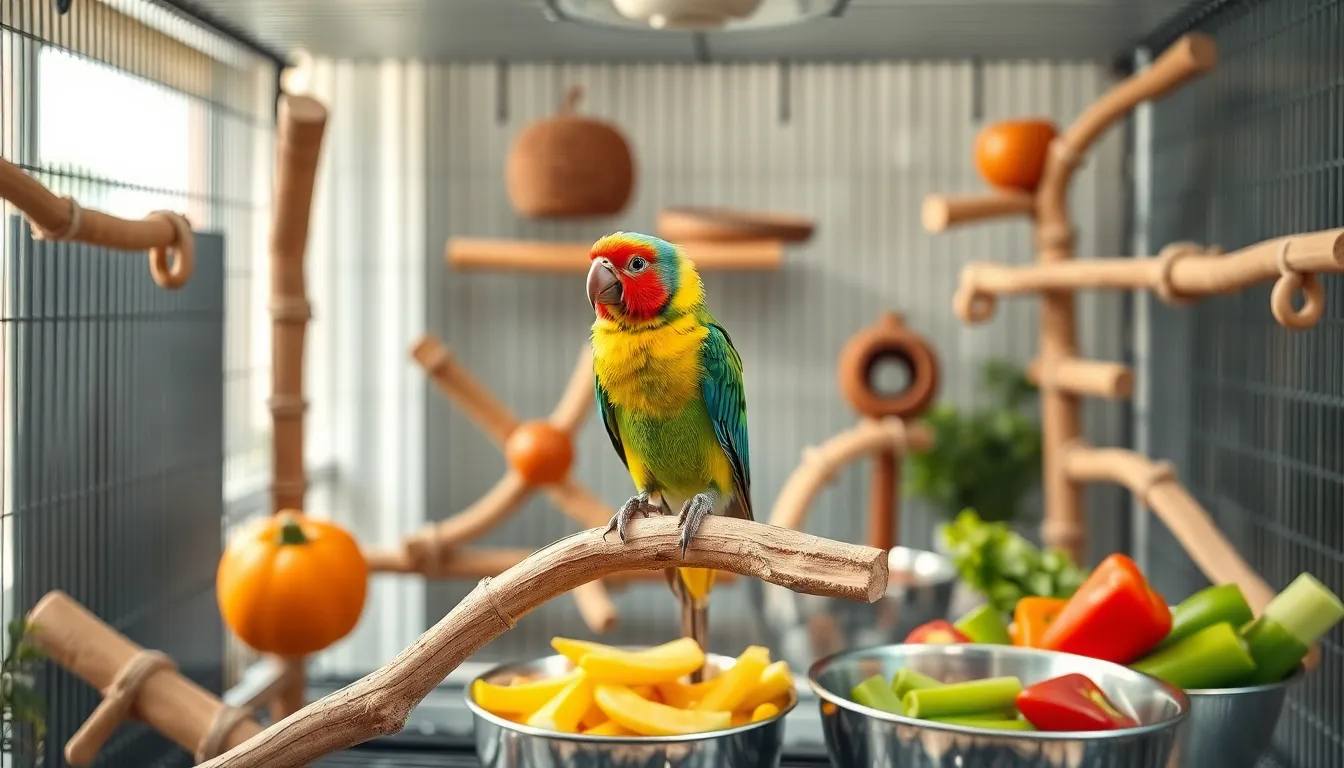
Meeting proper cockatiel care requirements ensures these intelligent birds thrive in captivity for their 15-20 year lifespan. We’ve outlined the essential elements that create optimal living conditions for cockatiel companions.
Housing and Cage Setup
Cage dimensions must accommodate their natural movement patterns. Cockatiels require minimum cage measurements of 24 inches wide by 18 inches deep by 24 inches high for a single bird. Multiple birds need proportionally larger spaces with at least 36 inches width.
Bar spacing ranges from 1/2 to 5/8 inches to prevent head entrapment. Horizontal bars provide climbing surfaces that mimic their natural tree navigation behaviors. Stainless steel or powder-coated metal cages resist rust and chewing damage better than galvanized options.
Perch variety supports foot health and prevents arthritis. Natural wood branches like apple, willow, or birch offer different diameters from 1/2 to 1 inch. Rope perches provide texture variation while avoiding sandpaper perches that cause foot injuries.
Strategic placement optimizes their comfort and security. Position cages against walls at eye level to create a safe retreat area. Avoid kitchens, bathrooms, or areas with temperature fluctuations exceeding 10 degrees Fahrenheit.
Diet and Nutrition Needs
High-quality pellets form the foundation of cockatiel nutrition. Premium pellets comprise 75-80% of their daily food intake, providing balanced vitamins and minerals. Avoid seed-only diets that cause malnutrition and liver disease.
Fresh vegetables supply essential nutrients and variety. Dark leafy greens like kale, spinach, and broccoli offer vitamin A and calcium. Orange vegetables including carrots, sweet potatoes, and bell peppers provide beta-carotene for immune system support.
Safe fruits serve as occasional treats rather than daily staples. Apples, berries, and melons contain natural sugars that cockatiels enjoy in moderation. Remove seeds and pits from fruits like apples and cherries due to cyanide content.
Clean water requires daily replacement for optimal health. Provide filtered or bottled water in stainless steel or ceramic bowls. Avoid plastic containers that harbor bacteria and cause potential health issues.
Exercise and Mental Stimulation
Daily flight time strengthens muscles and cardiovascular systems. Cockatiels need 2-3 hours of supervised out-of-cage time in bird-proofed rooms. Remove ceiling fans, close windows, and cover mirrors during exercise periods.
Interactive toys challenge their problem-solving abilities. Foraging toys hide treats inside puzzle mechanisms that encourage natural feeding behaviors. Rotate toys weekly to maintain interest and prevent boredom.
Social interaction fulfills their flock instincts. Cockatiels thrive on conversation, whistling, and training sessions with their human companions. Isolated birds develop behavioral problems including feather plucking and excessive screaming.
Mental enrichment activities prevent destructive behaviors. Teaching tricks, playing music, and providing climbing structures stimulate their intelligence. Paper shredding, bell ringing, and mirror play satisfy natural cockatiel behaviors in captive environments.
Health and Lifespan of Cockatiel Birds
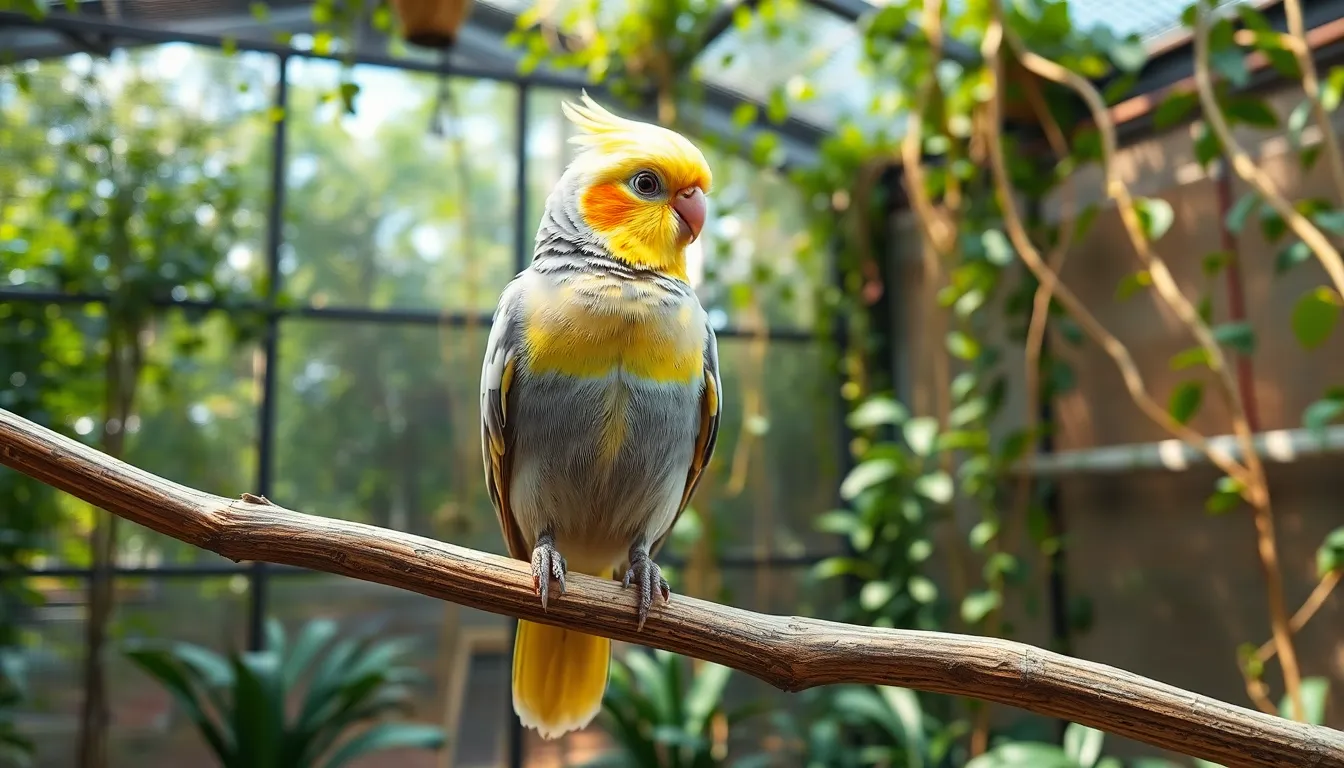
Cockatiels typically live 15-25 years in captivity when provided with proper care and nutrition. Understanding their health needs enables us to maximize their lifespan and quality of life.
Common Health Issues
Cockatiels experience several health conditions that affect their wellbeing throughout their lives. Feather plucking represents one of the most visible behavioral issues, often stemming from stress, boredom, or underlying medical conditions like allergies or infections.
Respiratory infections frequently occur in cockatiels due to their sensitive respiratory systems. Symptoms include tail bobbing, open-mouth breathing, and discharge from the nostrils or eyes. Poor air quality, drafts, and exposure to aerosols or cooking fumes trigger these infections.
Night frights cause cockatiels to panic and thrash around their cages during dark hours. External noises, sudden movements, or changes in lighting patterns activate these episodes. Birds can injure themselves severely during these panic attacks, breaking feathers or sustaining cuts.
Psittacosis, also known as parrot fever, affects cockatiels through bacterial infection. Infected birds display lethargy, loss of appetite, and green-colored droppings. This zoonotic disease can transmit to humans, making early detection crucial.
Egg binding occurs in female cockatiels when eggs become stuck in the reproductive tract. Nutritional deficiencies, particularly calcium shortage, contribute to this life-threatening condition. Affected birds strain repeatedly, show abdominal distension, and appear lethargic.
Fatty liver disease develops from diets high in seeds and low in nutrients. Cockatiels consuming predominantly sunflower seeds and millet face increased risk. Symptoms include difficulty breathing, enlarged abdomen, and yellowish discoloration around the eyes.
Veterinary Care and Maintenance
Annual wellness examinations with an avian veterinarian establish baseline health parameters for cockatiels. These checkups include weight monitoring, visual assessments, and blood work to detect early signs of disease.
Quarantine protocols protect existing birds when introducing new cockatiels to the household. New arrivals require 30-45 days of isolation with separate air circulation systems. Veterinary examination during this period identifies potential health issues before exposure to other birds.
Emergency situations demand immediate veterinary attention for cockatiels showing exact symptoms. Bleeding, difficulty breathing, seizures, or inability to perch indicate critical conditions requiring urgent care. Establishing relationships with 24-hour emergency veterinary clinics ensures access to care during off-hours.
Preventive care measures reduce the likelihood of common health problems in cockatiels. Regular cage cleaning eliminates bacterial growth, while proper ventilation prevents respiratory irritants. UV lighting supports vitamin D synthesis, and consistent sleep schedules reduce stress-related behaviors.
Grooming maintenance includes nail trimming every 6-8 weeks and wing clipping based on individual circumstances. Professional grooming services ensure safe techniques that prevent injury to blood vessels in nails and flight feathers.
Nutritional supplements support cockatiel health when recommended by veterinarians. Calcium supplements benefit egg-laying females, while probiotics support digestive health during antibiotic treatments. Vitamin A deficiency prevention through proper diet eliminates the need for supplementation in most cases.
Training Your Cockatiel Bird
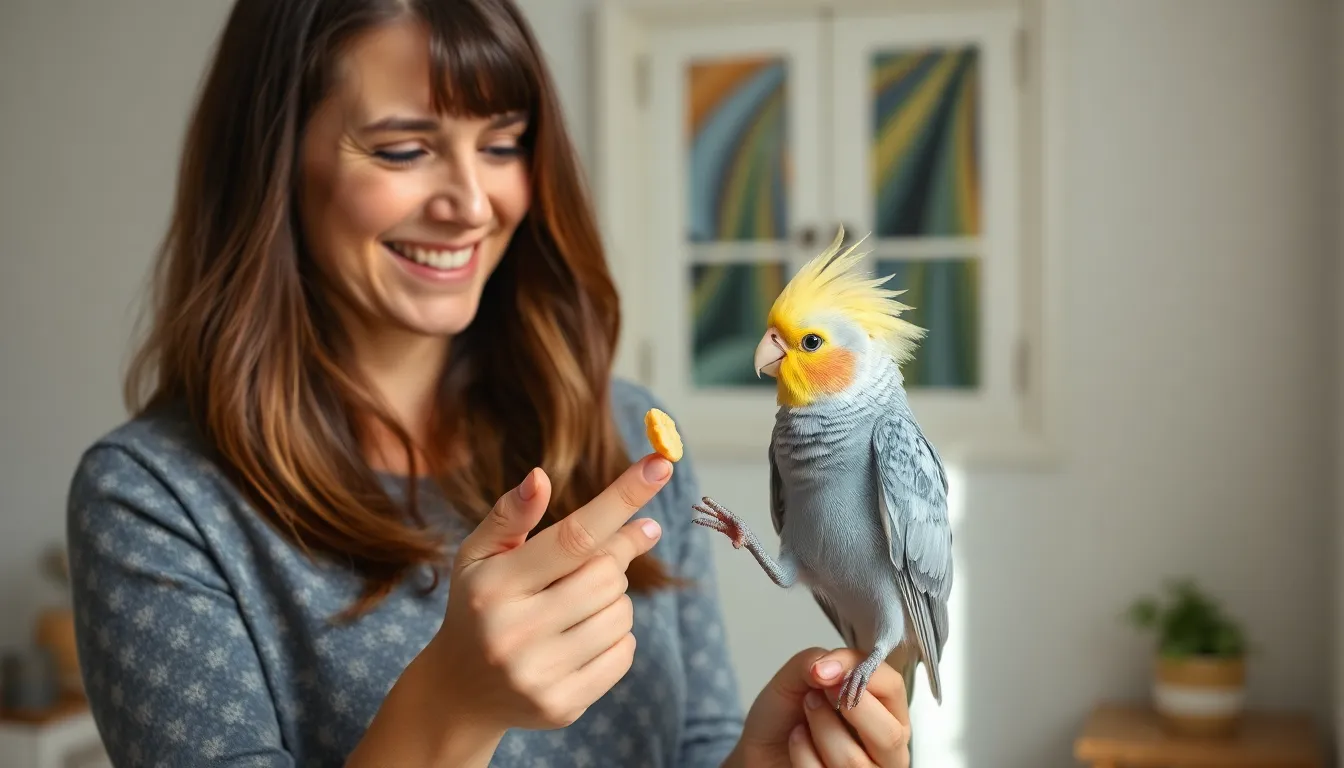
Training your cockatiel bird builds on the strong bonds these intelligent parrots naturally form with their human families. Consistent training sessions tap into their problem-solving abilities and eagerness to interact socially.
Basic Commands and Tricks
Step-up training forms the foundation of all cockatiel bird commands. Place your finger near your bird’s lower chest and gently press while saying “step up” in a calm voice. Practice this command 5-10 times daily during short 15-minute sessions.
Target training teaches your cockatiel to touch a stick or your finger on command. Hold a target stick 2-3 inches from your bird and say “touch” when they investigate it naturally. Reward immediately with millet spray or sunflower seeds.
Recall training develops when your cockatiel returns to you from across the room. Start with your bird perched 12 inches away and gradually increase distance to 6-8 feet. Use their name followed by “come here” while holding their favorite treat.
Trick progression follows this sequence for optimal learning:
- Wave goodbye (lift one foot when you wave)
- Spin around (follow a treat in circular motion)
- Play dead (lie on back for 3-5 seconds)
- Retrieve objects (bring small items to your hand)
- Ring bells (touch bell with beak on command)
Training sessions work best in the morning when cockatiels display peak alertness. Keep sessions under 20 minutes to maintain their attention span and prevent frustration.
Whistling and Talking Abilities
Male cockatiels demonstrate superior vocal abilities compared to females, with 80% of males learning to whistle tunes versus 20% of females. Start vocal training between 3-6 months of age when their learning capacity peaks.
Simple whistles provide the easiest starting point for cockatiel bird vocalizations. Repeat the same 4-note tune 10-15 times during each training session. Popular beginner tunes include “Charge,” “Here Comes the Bride,” and simple scales.
Word repetition requires patience since cockatiels typically learn their first word after 2-4 months of consistent practice. Choose short words like “hello,” “pretty bird,” or your bird’s name. Repeat the chosen word 20-30 times throughout the day in different contexts.
Environmental sounds capture cockatiel attention more easily than human speech. Many birds learn telephone rings, microwave beeps, and alarm sounds within 1-2 weeks of exposure.
Talking progression follows distinct stages in cockatiel development:
| Age Range | Vocal Milestone | Practice Duration |
|---|---|---|
| 3-4 months | First whistles | 2-3 weeks |
| 5-7 months | Complex tunes | 4-6 weeks |
| 8-12 months | First words | 8-12 weeks |
| 1-2 years | Phrases | 3-6 months |
Morning conversations produce the best results since cockatiels naturally vocalize most actively during dawn hours. Practice new sounds immediately after your bird’s breakfast when they’re alert and responsive to training cues.
Pros and Cons of Owning a Cockatiel Bird
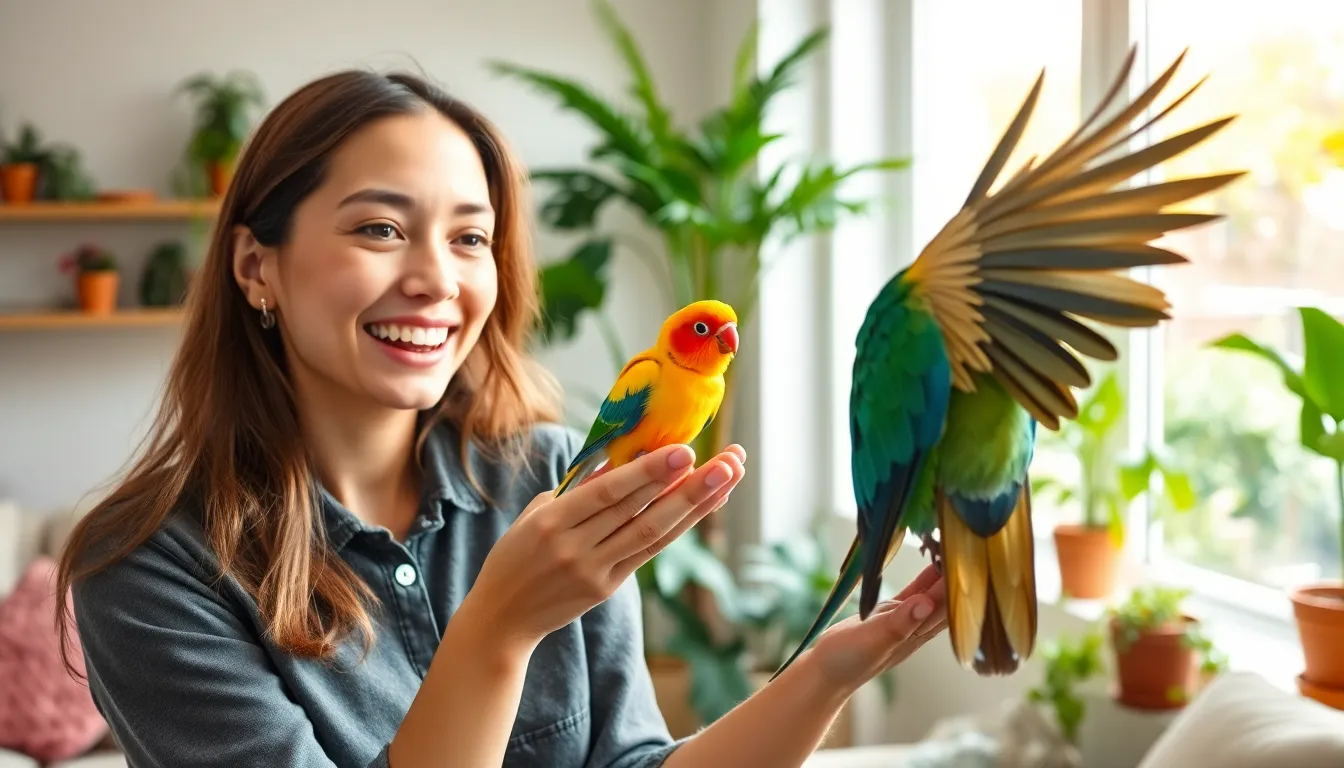
Cockatiel ownership presents distinct advantages and challenges that require careful evaluation before making the commitment. These remarkable companion birds offer unique rewards while demanding exact care requirements that span their 15-25 year lifespan.
Benefits of Cockatiel Ownership
Cockatiels form exceptionally strong emotional bonds with their human families, creating meaningful relationships that develop over months and years. Their sophisticated social behaviors enable them to read human expressions and respond with appropriate vocalizations and body language. Hand-fed birds typically establish trust connections within 2-4 weeks compared to 6-12 weeks for parent-raised cockatiels.
Interactive entertainment becomes a daily highlight as cockatiels demonstrate their problem-solving abilities through puzzle toys and training exercises. Male cockatiels excel at vocal mimicry, learning 10-20 distinct whistles and 5-15 words with consistent practice sessions. Training responsiveness increases dramatically in well-bonded birds, allowing them to master step-up commands within days and complex tricks within weeks.
Moderate care requirements make cockatiels accessible to first-time bird owners who maintain consistent routines. Daily feeding takes 5-10 minutes using high-quality pellets supplemented with fresh vegetables. Cage cleaning requires 15-20 minutes weekly with daily spot cleaning of food and water areas. Social interaction needs are satisfied through 2-3 hours of supervised out-of-cage time and regular conversation.
Long-term companionship spans multiple decades when proper veterinary care and nutrition are provided consistently. Cockatiels recognize their owners’ voices, faces, and daily schedules throughout their lifespan. Their gentle temperament makes them suitable for families with children over age 8 who understand proper handling techniques.
Challenges and Considerations
Time commitment extends far beyond basic feeding and cleaning requirements for optimal cockatiel wellness. Daily exercise periods demand 2-3 hours of supervised freedom outside the cage to prevent muscle atrophy and behavioral issues. Social interaction becomes critical as cockatiels develop separation anxiety when left alone for more than 6-8 hours regularly.
Financial responsibilities accumulate through veterinary expenses, quality food costs, and cage setup investments over their extended lifespan. Annual health checkups cost $100-200 while emergency veterinary visits range from $200-800 depending on treatment complexity. Premium pellet diets cost $15-25 monthly compared to $5-10 for seed-based diets that lack essential nutrients.
Noise levels can become problematic in apartment settings as cockatiels vocalize most actively during dawn and dusk periods. Contact calls reach 70-80 decibels when seeking attention or responding to household sounds. Neighbors may file complaints about repetitive whistling and calling during early morning hours from 6-8 AM.
Health monitoring requires constant vigilance as cockatiels hide illness symptoms until conditions become severe. Common issues like respiratory infections, feather plucking, and fatty liver disease develop gradually without obvious early warning signs. Night frights occur suddenly and can cause serious injuries if cage placement or lighting conditions aren’t optimized properly.
Behavioral challenges emerge when social needs aren’t met adequately through consistent interaction and mental stimulation. Feather plucking develops in 15-20% of pet cockatiels due to stress, boredom, or inadequate environmental enrichment. Aggressive behaviors like biting and territorial guarding can develop in poorly socialized birds or during hormonal periods.
Conclusion
Cockatiels represent one of nature’s most rewarding companion birds combining intelligence beauty and genuine affection for their human families. We’ve explored how these Australian natives bring joy through their playful personalities while requiring dedicated care and attention to thrive.
Their 15-25 year lifespan means we’re committing to a long-term relationship that demands consistent effort but rewards us with incredible bonds. From proper housing and nutrition to training and health monitoring every aspect of cockatiel ownership contributes to their wellbeing.
Whether you’re considering your first cockatiel or seeking to enhance your current bird’s quality of life remember that success comes from understanding their natural behaviors and meeting their physical and emotional needs. These remarkable birds will enrich our lives immeasurably when we provide the love and care they deserve.
Frequently Asked Questions
What is a cockatiel and where do they come from?
Cockatiels are small parrot species native to Australia, belonging to the cockatoo family. They’re characterized by their distinctive crest feathers and typically measure 12-13 inches in length. European explorers first discovered them in 1770, and they became popular pets in Europe during the 1800s due to their gentle nature and attractive appearance.
How long do cockatiels live and what affects their lifespan?
Cockatiels typically live 15-25 years in captivity with proper care. Their lifespan depends on factors like diet quality, regular veterinary checkups, proper housing, exercise, and mental stimulation. A balanced diet with high-quality pellets, fresh vegetables, and preventive health measures significantly contribute to their longevity and quality of life.
What are the different color variations of cockatiels?
Cockatiels come in various color mutations including Normal Gray (the wild-type coloration), Lutino (yellow and white), Pied (patches of different colors), Pearl, Cinnamon, and several other variations. These mutations have been developed through selective breeding while maintaining the species’ distinctive crest and overall body structure.
What size cage do cockatiels need?
Cockatiels require spacious cages with minimum dimensions that allow natural movement and wing stretching. The cage should have appropriate bar spacing to prevent escape while ensuring safety. Additionally, they need supervised out-of-cage time daily for exercise, mental stimulation, and social interaction to maintain their physical and psychological well-being.
What should I feed my cockatiel?
A balanced cockatiel diet consists primarily of high-quality pellets as the foundation, supplemented with fresh vegetables and safe fruits. Avoid feeding them avocado, chocolate, caffeine, and other toxic foods. Their natural diet includes grass seeds, but captive birds need more varied nutrition to prevent deficiencies and maintain optimal health.
Are cockatiels good pets for beginners?
Cockatiels make excellent pets for dedicated beginners due to their gentle nature and strong bonding abilities. However, they require significant time commitment, daily social interaction, and consistent care routines. They have moderate care requirements but need proper housing, balanced nutrition, regular veterinary care, and mental stimulation to thrive.
How do I train my cockatiel?
Start with basic commands like step-up training, then progress to target training and recall training. Keep training sessions short and conduct them during morning hours when birds are most alert. Building trust and strong bonds is essential for successful training. Male cockatiels are generally more vocal and may learn whistles and words more easily.
What are common health problems in cockatiels?
Common health issues include feather plucking, respiratory infections, night frights, psittacosis, egg binding in females, and fatty liver disease. Regular veterinary checkups, proper cage cleaning, adequate ventilation, and immediate attention to behavioral changes help prevent and identify health problems early for better treatment outcomes.
Do cockatiels need companionship?
Cockatiels are highly social birds with strong flock instincts. While they can bond closely with human families, they benefit from daily social interaction and mental stimulation. Single cockatiels require more human attention to prevent loneliness and behavioral issues. Some owners choose to keep pairs, but proper introduction is essential.
How noisy are cockatiels?
Cockatiels produce moderate noise levels through various vocalizations including whistles, chirps, and contact calls. Males tend to be more vocal than females and may learn to mimic sounds and words. Their noise level can be challenging in apartment settings, especially during dawn and dusk when they’re naturally most active.

